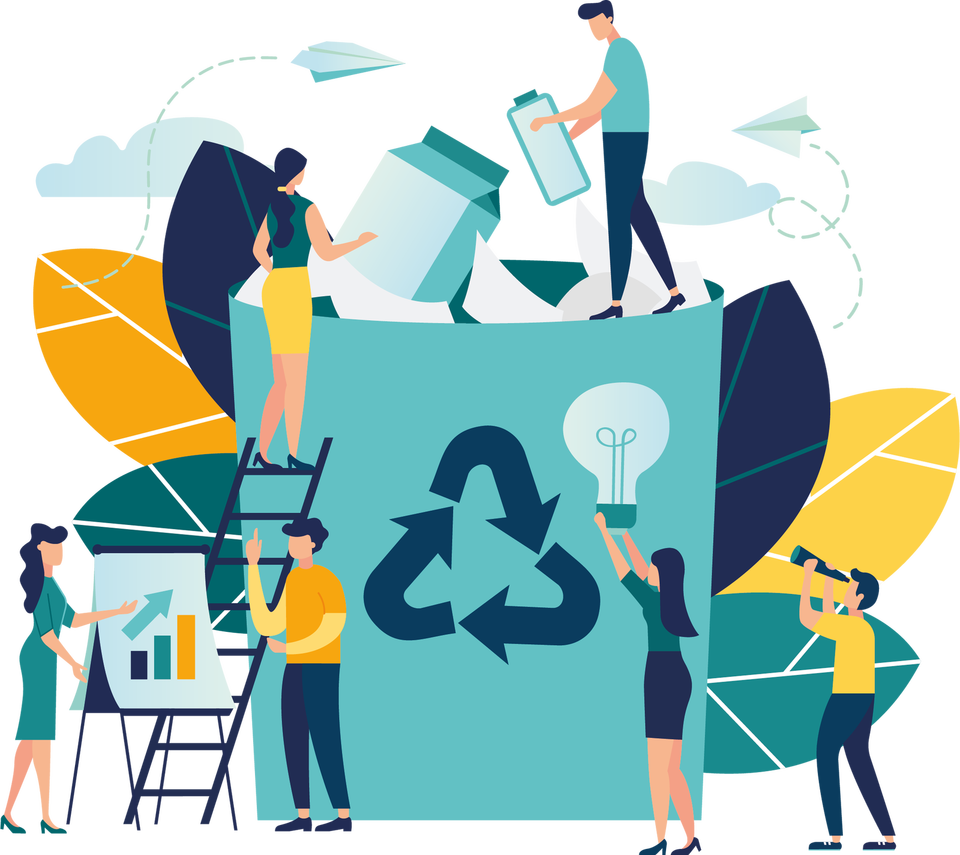Q&A
Consumer demand for recyclable packaging is monumental" - WRAP sector specialist Adam Herriott
Consumer awareness of - and willingness to - recycle has never been higher. However, many are still unsure of what can be recycled and how to do so. Inside Packaging’s Jessica Paige talks with WRAP sector specialist Adam Herriott to find out how UK-based packaging producers can help educate consumers.

W
hen it comes to recycling - what to recycle, in particular - many consumers are confused. Even those with the best intentions, who actively want to recycle, can have trouble doing so, thanks predominantly to the absence of education around the process and what can even be recycled.
Efforts are being made to rectify this problem. Earlier this Summer, multiple retailer Tesco installed collection points for ‘soft plastic’ - a type of plastic many local authorities are unable to recycle - in all of its large stores. Meanwhile, in July, fellow supermarket chain Co-Op confirmed similar plans for later this year.
While retailers appear to be doing their bit, are the packaging producers themselves doing enough to sate consumers’ appetite for recycling? Inside Packaging speaks to Adam Herriot, sector specialist at Waste & Resources Action Programme (WRAP), a UK-based charity organisation that helps businesses and communities to achieve a circular economy.

Adam Herriot
Inside Packaging: Why is there so much confusion around what materials are recyclable?
Adam Herriott: A large part of this is to do with the lack of consistency in what consumers/citizens are able to recycle, from one local authority to another. Currently, what you’re able to recycle at home varies greatly in different parts of the country.
There are plans, however, to change this so everyone is able to recycle the same items, no matter where they live. This will mean that when you visit friends and family - or when they come and visit you - the wrong items won’t make their way into the wrong bin by mistake.
Are there any laws or regulations in place that producers need to follow when it comes to educating consumers on recycling?
The Government’s Resources & Waste Strategy, published in December 2018, outlined a number of ways in which producers will be able to do this. Mandatory on-pack binary labelling - telling consumers if the packaging can or cannot be recycled - are to be introduced. However, there is nothing stopping producers from adopting on-pack labelling now.
WRAP has been working with [not for profit company) On-Pack Recycling Label (OPRL) for over a decade on recycling labelling. They’re the only evidence-based, on-pack labelling scheme in the UK that is endorsed by the recycling industry.

There are also other ‘standards’ that organisations must follow in regards to making green claims about a product. The international Standard ISO14021 has strict criteria around environmental labels and declarations and aims to stop ‘greenwashing’ claims by businesses.
The impending introduction of Extended Producer Responsibility means that producers will be charged the full cost of collecting and disposing of the material they place onto the market. This includes the collection, sorting, recycling as well as the communications around what to do with the material.
What are producers doing right now to help consumers?
Naturally, a lot of producers of packaging are members of OPRL to help inform their customers of what to do with their packaging. But, there are other ways in which they are talking to customers too. Messaging in-store has become more commonplace, but the rise of Social Media means there is an ever-present means of communication between brands, retailers and consumers - this also means that consumers can make sure that their thoughts on packaging are also heard loud and clear.
There are ongoing projects that have the potential to revolutionise how consumers use packaging. ‘Project HolyGrail’, for example, uses digital watermarking to help waste management easily sort different materials. This watermark can also be read by smartphones, enabling consumers to find out - often via engaging Augmented Reality - things like what the packaging is made from and how they can recycle it locally.
Some of these projects are still in their infancy but have the backing of the full supply chain, including some major names, and can really impact how producers, brands and retailers can communicate with consumers
Do you believe these efforts are enough?
There’s always more that can be done! The obvious best-case scenario is that the packaging isn’t produced or needing of disposal in the first place, so reuse and refill schemes are an important area to consider.
Also, ensuring that if packaging can’t be reused then it is easily recyclable, means using simple, mono-material packaging where possible. Where that’s not possible - for example, in order to preserve food shelf-life and minimise food waste - then ensuring that materials are either easily separated or are compatible to be recycled together.
On-pack labelling and messaging is key, There has been a monumental shift in consumer demand for packaging with high recycled content and recyclability - non-recyclable packaging often being the deciding factor for whether consumers buy a product!
What should producers be doing to help educate consumers on recycling?
Apart from on-pack labelling and messaging, ensuring that their packaging is made from recyclable and recycled content, they can get involved in Recycle Now’s ‘Recycle Week Campaign’. Each year, WRAP runs Recycle Week (20th-26th September this year), which has seen a year-on-year increase in engagement with major brands and retailers sponsoring events throughout the week.
There have been some great examples of brands and retailers using their initiative to promote either recycling facilities on-the-go - such as recent announcements around front-of-store plastic film recycling - as well as promoting how they have changed their once non-recyclable packaging to recyclable alternatives.
Does the responsibility to educate on recycling fall on producers, retailers, government, consumers, or someone else?
I think it falls on everyone's shoulders. Brands and retailers have a duty to ensure they are using recyclable material in their packaging and that there are clear instructions on what to do with that material once used.
Local and central governments have the duty to ensure their citizens all have access to recycling facilities at home and that collections are properly funded.
Consumers have the responsibility to ensure they’re putting the right material in the right bins and even helping their neighbours and community, where necessary. They also have the power to pressure brands and retailers into changing their packaging to something more sustainable. After all, if they don’t buy a product, then brands and retailers will be forced to take action.